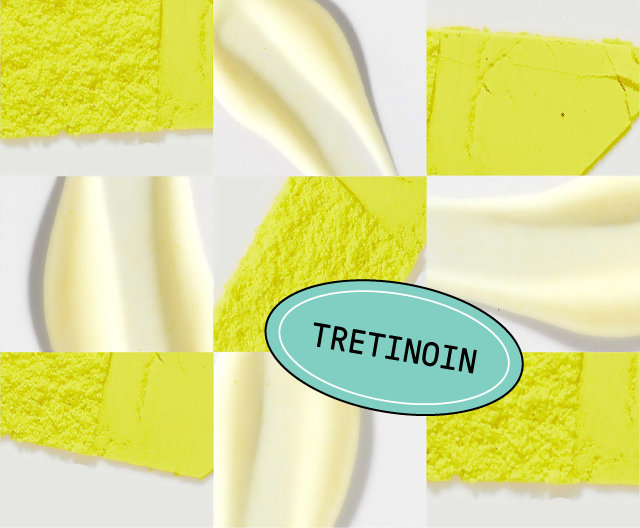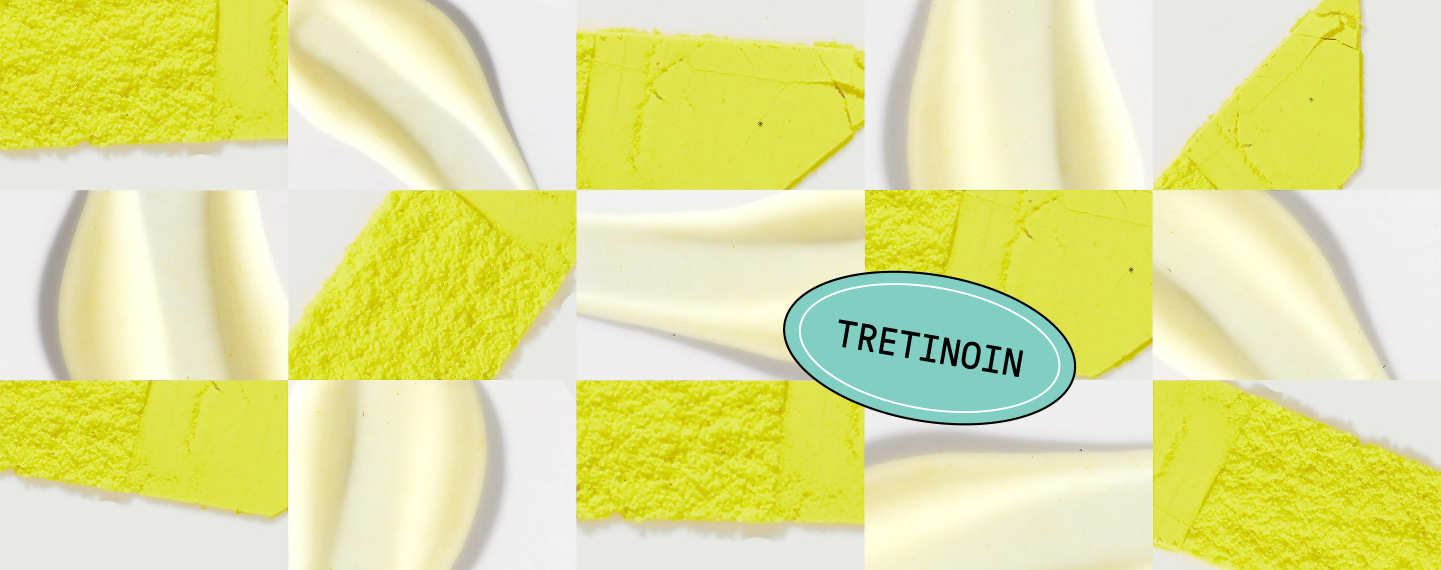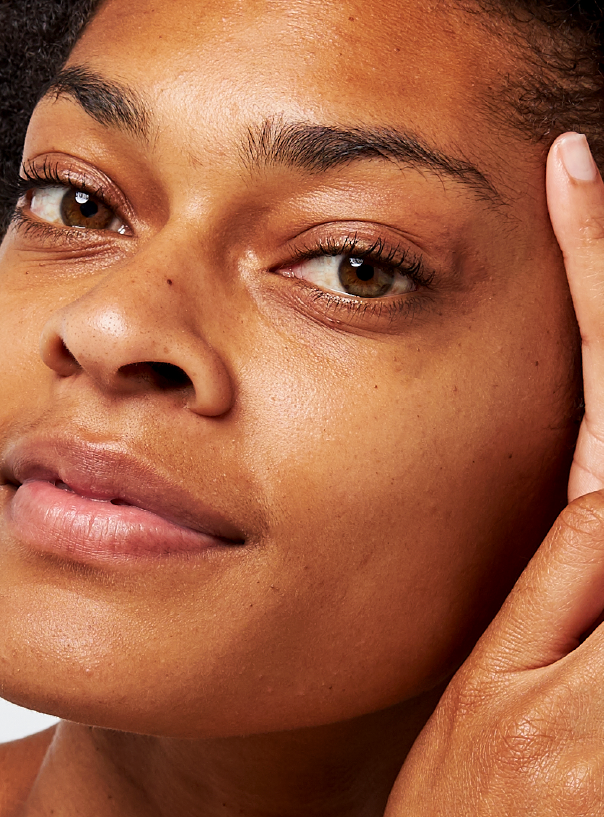Apostrophe Treatments
Debunking Tretinoin Myths


SHARE
Apostrophe Treatments
Debunking Tretinoin Myths
Medically reviewed by Aimee Paik, MD
Written by Annie Lam
Last updated 4/6/2022
You’ve probably heard by now that dermatologists and skincare influencers alike are obsessed with retinoids. Tretinoin is a very popular retinoid that helps to treat acne, signs of aging, and hyperpigmentation. It’s considered the gold standard for good reason! While there’s a lot of positive hype around tretinoin, there are also many misconceptions that can scare away potential users. So we asked our medical director Dr. Aimee Paik to debunk some popular myths about tretinoin.
1. Tretinoin can’t be used by people with sensitive skin
Many people believe that prescription-strength retinoids like tretinoin are off limits for people with sensitive skin - but that isn’t always the case! While tretinoin can cause initial sensitivity or irritation, it’s an amazing treatment for acne, hyperpigmentation, and signs of aging. Dr. Paik says, “Retinoids like tretinoin can be used cautiously by those with sensitive skin but I would recommend a much lower strength.” Here at Apostrophe, we have a 0.018% tretinoin that’s great for sensitive skin!
2. Prescription-strength retinoids like tretinoin are only used for treating acne
While dermatologists love tretinoin for treating acne, it’s not the only benefit! “Prescription-strength retinoids have amazing skin benefits beyond acne including treating photoaging,” says Dr. Paik. “They’re actually good for keeping skin healthy and promoting a youthful glow.” Tretinoin is a great retinoid for treating acne of all severities, but don’t underestimate its ability to treat signs of aging and hyperpigmentation too!
3. You need to increase retinoid strength to continue seeing results
Another common misconception is that you constantly need to increase the strength of your tretinoin in order to see results long term. Here’s Dr. Paik’s take: “while higher strength retinoids may be needed to better control acne, this is not true for its anti-aging benefits.” She recommends looking for a minimum strength of about .02% for skin rejuvenating benefits.
Another tip? “You also need patience -- retinoids work over a two year period to slowly improve skin quality.” Two years might sound like forever, but remember that skincare is a marathon, not a sprint. Consistency and patience are key to healthy skin.
4. Retinoids like tretinoin thin the skin
This is one of the most popular retinoid myths… and it’s simply not true. Where does this misconception come from? “Retinoids initially cause an exfoliating effect on the epidermis (the top layer of skin),” says Dr. Paik. Some people believe this exfoliation “thins” the skin. However, “over time retinoids promote collagen production in the dermis (deeper layer of skin), leading to healthier, firmer skin.” So you can rest easy knowing that your retinoid is keeping your skin happy and healthy!
5. If you’re noticing irritation, stop use immediately
Another potential reason people avoid tretinoin? The initial sensitivity or irritation that comes with starting out. Tretinoin may cause sensitivity in the first few months of treatment as the skin adjusts. Many people say to fully stop retinoid use when experiencing sensitivity, but what’s a derm’s take on it? Dr. Paik advises, “while periodic breaks may be needed, it’s best to continue use so your skin eventually acclimates to treatment. Periodic breaks and liberal use of moisturizers will help during the initial adjustment period.” Start slowly and try different application methods with your tretinoin to help minimize sensitivity and irritation.
6. You can’t use retinoids in the summer
“This is a big misconception,” Dr. Paik states. “While retinoids can increase sun sensitivity during the first six months of use (because of the exfoliating effect), after that, sensitivity to the sun returns to normal. There is no need to stop retinoids during the summer.” Regardless of whether or not you’re using tretinoin, “I recommend diligent use of sunscreen and hats for all my patients.” So feel free to use your tretinoin daily, regardless of the season. Just don’t forget to apply your SPF! If you’re looking for a sunscreen that perfectly complements prescription treatments like tretinoin, check out ‘Screen.
If you were ever concerned about using tretinoin because of these myths, hopefully this paints a clearer picture. Tretinoin is well-loved by dermatologists for treating acne, signs of aging, and hyperpigmentation. Want to see if tretinoin is a good fit for you and your skin? Get a customized acne treatment plan crafted by a board-certified dermatologist today. Your skin will thank you later. 💞
Shop this post

Tretinoin
Like what you just read? Sign up for our email list to get the scoop on skincare science delivered straight to your inbox.

Education
What is milia?
What is milia? Today, we’re jumping into one type of bump that you may have heard about most commonly in infants — milia.
Read More
Education
Best moisturizer for acne-prone skin
If you have combination acne-prone skin, figuring out which moisturizer is best for your skin might be tough. In this guide, we break down the best moisturizer for combination, acne-prone skin.
Read More
Education
How to build a face care routine
As you get into skincare, it might seem overwhelming, especially trying to figure out the order you're supposed to apply products in. Below, we detail how to build a face care routine for your skin!
Read More
